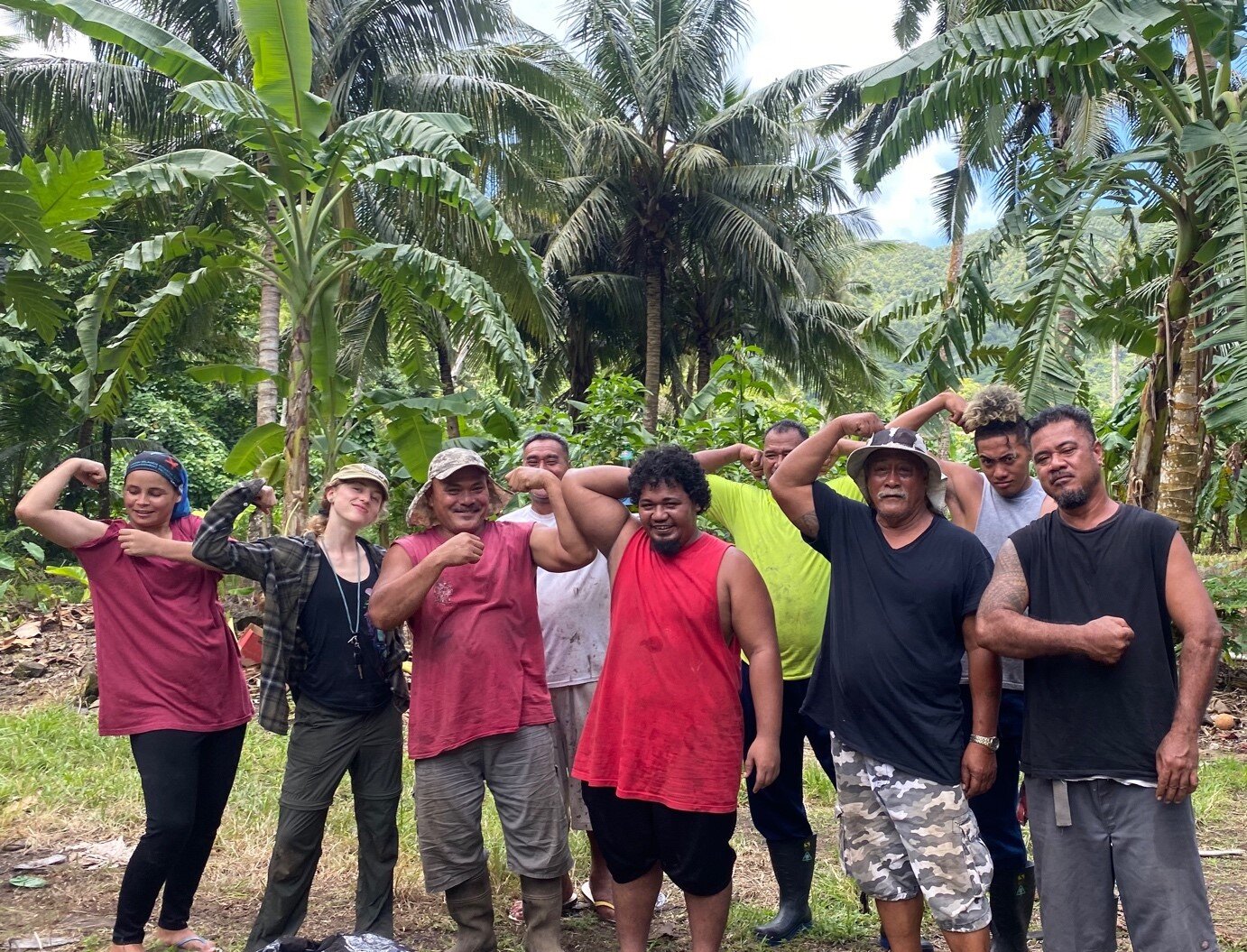Piggery Runoff Solutions, American Samoa
Project build underway to treat septic runoff from piggeries
Project Summary
This project addresses two major sources of pollution in American Samoa: nutrient and bacteria runoff from piggeries and on-site waste disposal systems including cesspools and septic systems. Thus far we have implemented two projects with the assistance of the American Samoa Advisory Group (CRAG) as well as school children and teachers from Mt. Alava Elementary School in Vatia. The projects use biochar produced on the island and vetiver grass to treat polluted effluent from these systems.
Problem
Runoff from piggeries, cesspools, and improperly functioning septic systems introduce bacteria and excess nutrients to local waterways. This poses a direct threat to human health and communities. The water quality impacts places stress on downstream areas of the watershed, including coral reefs.
Solution
Creating vegetative and biochar rain garden (i.e. bioretention) catchment areas where runoff can be naturally treated with vegetation and soil before flowing downstream. Natural plant and microbial processes in the soil remove contaminants from the piggery and septic outflows.
Implementation
Ridge to Reefs worked with American Samoa’s Coral Reef Advisory Group (CRAG) as well as school children and teachers from the Mt. Alava Elementary School in Vatia to install green infrastructure solutions. Using coconut husks, biochar produced on the island from driftwood, and vetiver grass, a perennial grass effective in providing erosion control, we established new bioretention areas to treat polluted effluent from the elementary school’s septic system and several piggeries in the village of Vatia.
Outcomes
Cleaning effluent from the source, before it impacts the watershed, protects human health and supports recovery of the entire watershed. Healthy watersheds provide clean water sources for healthy communities, improve habitat for local species, and restore ecological function.
Funders and Partners American Samoa’s Coral Reef Advisory Group (CRAG), Mount Alava Elementary School in Vatia















